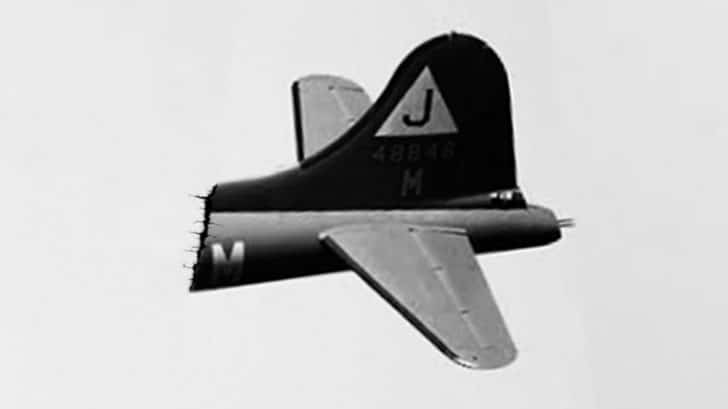Usually, when a plane gets snapped in half, you’d expect to find no survivors. However, on November 29, 1943, one tail gunner would live to tell the tale of what happened to him and his crew.

A Dangerous Mission
That day, Eugene Moran, a B-17 tail gunner, and his crewmates were flying aboard Riki Tiki Tavi for their fifth bombing mission at Bremen, Germany. After dropping their payload over the area, Moran’s B-17 fell behind the fleet of B-17s and fell easy prey to the German fighters and anti-aircraft batteries. Eight crew members were killed during the fight, while the navigator successfully bailed out, and Gene was left to fend for himself.

It’s About To Get Worse
A well-placed Flak cut off the B-17’s tail, resulting in a loud explosion. Suddenly, Eugene Moran heard the bomber’s engines less and less – while his ears popped due to a change in pressure. There was no doubt in his mind that he was falling towards his death.
The gunner grabbed his bullet-riddled parachute and tried to escape from the tail, but the escape door wouldn’t budge. Luckily for Moran, the flak cut through the tail section almost perfectly to stay upright. The fins of the tail produced sufficient drag, allowing it to behave almost like a glider.

Present In The Moment
Surprisingly, Moran still had the presence of mind to continue firing at the German Bf109s while he was freefalling. If freefalling to your death wasn’t enough of a stress factor, add in the fact that anti-aircraft batteries continued to fire at Moran, thinking he was operating an unknown Allied aircraft.
After a few moments, the tail glided down from above and hits a tree upon landing. Nearby, a Serbian POW, who happens to be a doctor, rushed to the scene and saw Moran within the wreckage. Astonishingly, Eugene Moran was still alive inside – albeit bloodied and heavily injured. It turns out, Moran went head first against the .50-cal machine gun when the tail hit the tree, which shattered his skull.

Holding On
Eugene Moran would fully recover later on, but this wouldn’t be the last of his suffering. He spent 18 months in inhumane POW camps in Germany, Russia, and Poland. Moran also endured a 600-mile forced march from February 1945 to April of that year during one of the coldest winters on record.

A Good Ending, For Once
Moran was liberated on April 26, 1945, at Bitterfeld, Germany, weighing only 128 lbs. America awarded him two Purple Hearts, the Good Conduct medal, the Air Medal with Gold Leaf Cluster, and the European Theater Award, making him one of the most decorated airmen of WWII.
His hometown of Soldiers Grove, Wisconsin, named a street after him: “Eugene P. Moran Park Drive” in honor his service.


